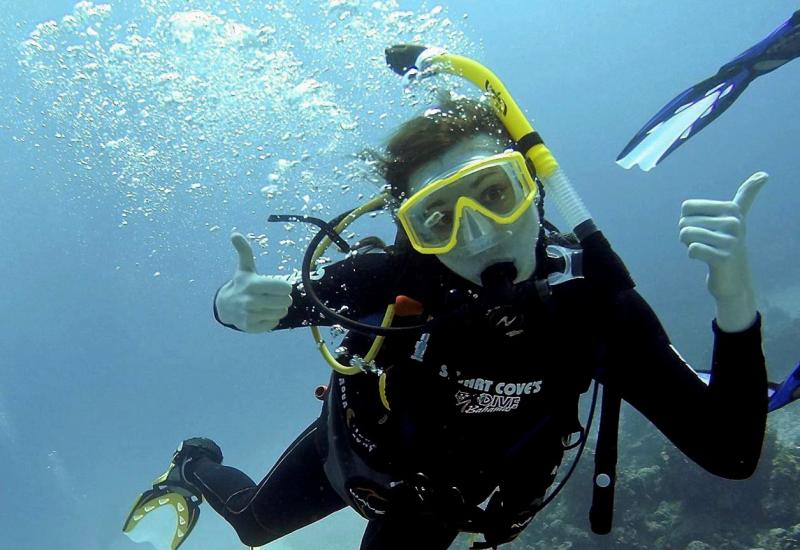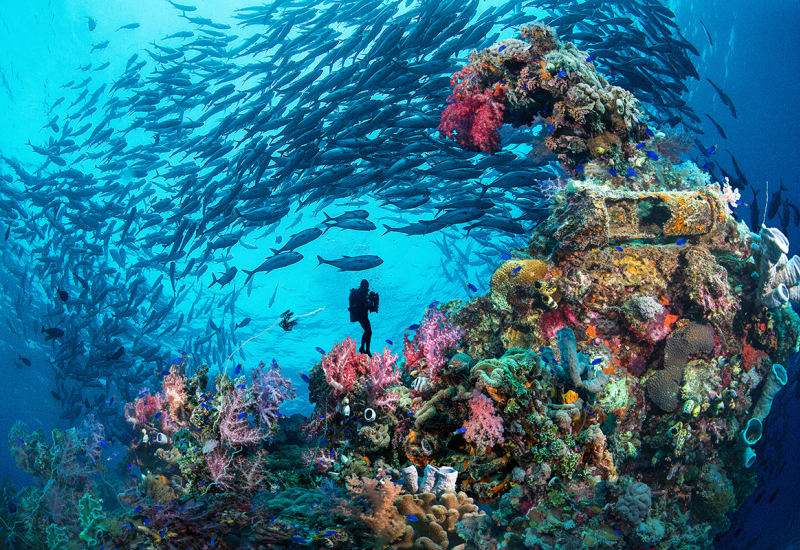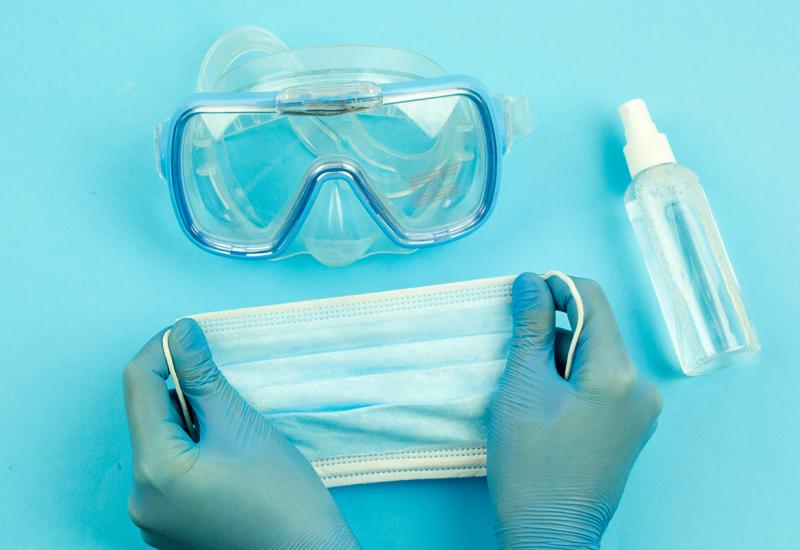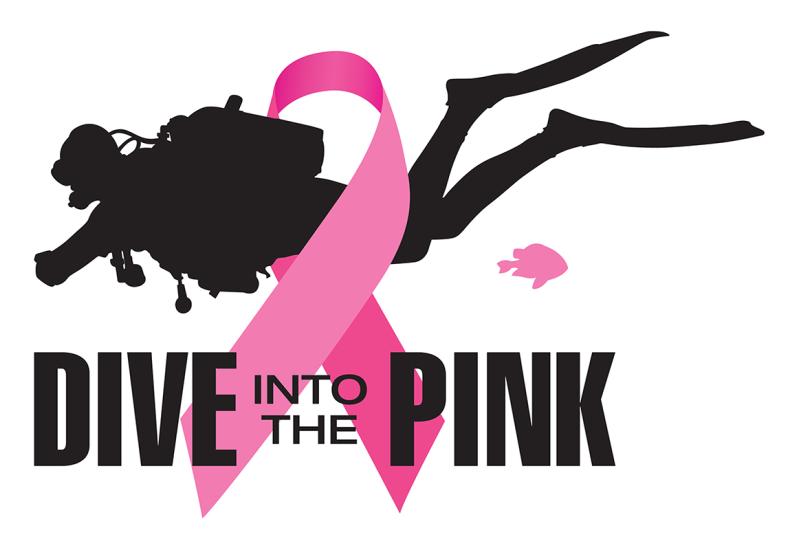Flying After Diving: How Long Do Scuba Divers Have to Wait?
Cautionary tales about going to altitude after diving describe one of the core rules taught in any open-water course. But divers often have questions about specific recommendations because the rules occasionally change. Here at DAN, we have made the relationship between altitude and diving one of our primary studies for 20 years, helping to generate data and update the flying-after-diving rules taught by training agencies worldwide. Here are answers — using the most scientifically up-to-date information our researchers can provide — to three of the most common altitude and diving questions we are asked on our medical information line.
Can I dive immediately after flying?
Diving after flying does not in itself create a decompression problem since flying leaves you with less inert gas in your tissues than would be there had you stayed at ground level unless you land at high altitude. Because of this, there are no set guidelines for when to make your first dive. The critical issue is simple fitness to dive. Air travel can leave divers fatigued, improperly nourished, possibly somewhat dehydrated, generally stressed, and disorganized. Long-distance travel compounds the problem, particularly when multiple time zones are crossed. The more you or any member of your dive team are affected, the longer the recovery time you need to build into your planning before starting to dive.
Do this by building some pre-dive flight recovery time into your travel plans. Fatigue and disorganization can affect performance and safety — if you are tired or not quite on your game, you might not respond well to strenuous or emergency circumstances — so make sure you are well rested and ready.
Of course, if you are traveling on a shorter flight or have easy travel that has you arriving at your destination rested, properly nourished, hydrated and well-organized, then immediate diving may be feasible. Most important is that you and your dive partners need to honestly and objectively assess your condition. It is not worth compromising your safety — which could ruin more than your whole trip — because you or someone else is in a hurry to make the first dive.
How long do I have to wait before flying after diving?
The concerns of heading to altitude too soon after diving are the same as those when you ascend from your dive too quickly because the same scientific principles apply: going to altitude takes you to an area of lower outside pressure, meaning residual nitrogen still dissolved in your blood can come out of solution as bubbles if the pressure reduction is not slow enough to let your body off-gas safely. Staying at ground level before going to altitude is like doing a decompression stop. Deeper and longer dives will leave you with more residual nitrogen, thus requiring a longer pre-flight surface interval. The time you should wait relates directly to the pattern of diving completed.
We recommend a general practice of allowing a surface interval of 24 hours or more before flying after diving. This should bring reasonable peace of mind and help to provide a buffer for unexpected problems, like a loss of cabin pressurization during flight. Ultimately, it is better safe than sorry and almost every location has enough to entertain you for the final day. Alternatively, you can choose to follow the minimum guidelines established by DAN and the Undersea and Hyperbaric Medical Society for flying in commercial pressurized aircraft (Sheffield and Vann 2004):
• A single dive within the no-decompression limits: 12 hours
• Repetitive dives of multiple days of diving: 18 hours
• Decompression dives (planned or unplanned): substantially greater than 18 hours
The UHMS-DAN guidelines were based on reasonable laboratory data for the no-decompression exposures. The vagueness of the post-decompression dive recommendation was to acknowledge that we did not have sufficient data to establish a firm guideline. This brings us back to the 24 hour recommendation. Planning conservatively is a good way to stay out of trouble. Given the variety of decompression algorithms now available for divers - some conservative but many fairly liberal - a healthy buffer represents inexpensive insurance.
It is also important to remember that these guidelines apply to divers who have not experienced any DCS symptoms on the trip. If you or a partner have experienced DCS symptoms during your dive trip, you should be medically evaluated, if possible, before flying. You can contact DAN to help connect you with appropriate resources or in case of emergency.
Just as we are taught not to "push the tables" in terms of depth and bottom times, it is a wise choice not to push flying after diving. Making your final dives more conservative and leaving an ample buffer between your last dive and your flight home is part of smart dive planning, a goal for all in the community.
No plane, no problem — right?
Wrong. Many dive destinations offer a variety of activities below and above the water. In the Hawaiian Islands, for example, you could dive in the morning and spend the afternoon 10,000 feet above sea level at the crater of a volcano. Some divers who would not think about boarding a plane so soon after diving could forget about the similar risk of heading up a mountain to enjoy the view.
Consider this: The cabin of an airliner is usually pressurized to the equivalent of between 6,000 and 8,000 feet — even if the plane's cruising altitude is 30,000 feet or more. Travel up a 10,000-foot mountain poses more risk than flying as long as the pressurization is maintained in the aircraft.
Also consider the trip home when you are diving by car. Divers sometimes have to traverse mountain passes or higher elevations between a dive site and home. The altitude that was not a problem on the way to the site could be a problem after diving. If you know that you have to drive through a mountainous area, or any area that causes you to experience a change in altitude, be sure to factor the altitude change and the subsequent considerations into your overall plan. This could mean following the same flying after diving guidelines or, for more structured diving, the U.S. Navy altitude dive tables can help you for planning both diving and altitude as well as the traveling to and from (USN 2008).
In whatever form it comes, the bottom line is that altitude exposure is altitude exposure. There is no dodging the considerations they require, and ignoring them significantly increases your risk of being injured. So remember to keep your feet on the ground after you dive — if only for a little while.
What is DAN?
Divers Alert Network (DAN) is a 501(c)(3) nonprofit medical and research organization dedicated to the safety and health of recreational scuba divers.
For diving emergencies, call the DAN 24-Hour Diving Emergency Hotline: (919) 684-4DAN (collect calls accepted).
For nonemergency questions, call the DAN Medical Information Line at (919) 684-2948.
Additional information can be found at www.diversalertnetwork.org
References
Sheffield P, Vann RD, ed. DAN Flying After Diving Workshop Proceedings. Durham, NC: Divers Alert Network, 2004.
U.S. Navy Diving Manual, Volume 2, Revision 6. NAVSEA 0910-LP-106-0957. Naval Sea Systems Command: Washington, DC, 2008: Section 9.
Cautionary tales about going to altitude after diving describe one of the core rules taught in any open-water course. But divers often have questions about specific recommendations because the rules occasionally change. Here at DAN, we have made the relationship between altitude and diving one of our primary studies for 20 years, helping to generate data and update the flying-after-diving rules taught by training agencies worldwide. Here are answers — using the most scientifically up-to-date information our researchers can provide — to three of the most common altitude and diving questions we are asked on our medical information line.
Can I dive immediately after flying?
Diving after flying does not in itself create a decompression problem since flying leaves you with less inert gas in your tissues than would be there had you stayed at ground level unless you land at high altitude. Because of this, there are no set guidelines for when to make your first dive. The critical issue is simple fitness to dive. Air travel can leave divers fatigued, improperly nourished, possibly somewhat dehydrated, generally stressed, and disorganized. Long-distance travel compounds the problem, particularly when multiple time zones are crossed. The more you or any member of your dive team are affected, the longer the recovery time you need to build into your planning before starting to dive.
Do this by building some pre-dive flight recovery time into your travel plans. Fatigue and disorganization can affect performance and safety — if you are tired or not quite on your game, you might not respond well to strenuous or emergency circumstances — so make sure you are well rested and ready.
Of course, if you are traveling on a shorter flight or have easy travel that has you arriving at your destination rested, properly nourished, hydrated and well-organized, then immediate diving may be feasible. Most important is that you and your dive partners need to honestly and objectively assess your condition. It is not worth compromising your safety — which could ruin more than your whole trip — because you or someone else is in a hurry to make the first dive.
How long do I have to wait before flying after diving?
The concerns of heading to altitude too soon after diving are the same as those when you ascend from your dive too quickly because the same scientific principles apply: going to altitude takes you to an area of lower outside pressure, meaning residual nitrogen still dissolved in your blood can come out of solution as bubbles if the pressure reduction is not slow enough to let your body off-gas safely. Staying at ground level before going to altitude is like doing a decompression stop. Deeper and longer dives will leave you with more residual nitrogen, thus requiring a longer pre-flight surface interval. The time you should wait relates directly to the pattern of diving completed.
We recommend a general practice of allowing a surface interval of 24 hours or more before flying after diving. This should bring reasonable peace of mind and help to provide a buffer for unexpected problems, like a loss of cabin pressurization during flight. Ultimately, it is better safe than sorry and almost every location has enough to entertain you for the final day. Alternatively, you can choose to follow the minimum guidelines established by DAN and the Undersea and Hyperbaric Medical Society for flying in commercial pressurized aircraft (Sheffield and Vann 2004):
• A single dive within the no-decompression limits: 12 hours
• Repetitive dives of multiple days of diving: 18 hours
• Decompression dives (planned or unplanned): substantially greater than 18 hours
The UHMS-DAN guidelines were based on reasonable laboratory data for the no-decompression exposures. The vagueness of the post-decompression dive recommendation was to acknowledge that we did not have sufficient data to establish a firm guideline. This brings us back to the 24 hour recommendation. Planning conservatively is a good way to stay out of trouble. Given the variety of decompression algorithms now available for divers - some conservative but many fairly liberal - a healthy buffer represents inexpensive insurance. It is also important to remember that these guidelines apply to divers who have not experienced any DCS symptoms on the trip. If you or a partner have experienced DCS symptoms during your dive trip, you should be medically evaluated, if possible, before flying. You can contact DAN to help connect you with appropriate resources or in case of emergency.
Just as we are taught not to "push the tables" in terms of depth and bottom times, it is a wise choice not to push flying after diving. Making your final dives more conservative and leaving an ample buffer between your last dive and your flight home is part of smart dive planning, a goal for all in the community.
What about driving or hiking to high altitudes?
Wrong. Many dive destinations offer a variety of activities below and above the water. In the Hawaiian Islands, for example, you could dive in the morning and spend the afternoon 10,000 feet above sea level at the crater of a volcano. Some divers who would not think about boarding a plane so soon after diving could forget about the similar risk of heading up a mountain to enjoy the view.
Consider this: The cabin of an airliner is usually pressurized to the equivalent of between 6,000 and 8,000 feet — even if the plane's cruising altitude is 30,000 feet or more. Travel up a 10,000-foot mountain poses more risk than flying as long as the pressurization is maintained in the aircraft.
Also consider the trip home when you are diving by car. Divers sometimes have to traverse mountain passes or higher elevations between a dive site and home. The altitude that was not a problem on the way to the site could be a problem after diving. If you know that you have to drive through a mountainous area, or any area that causes you to experience a change in altitude, be sure to factor the altitude change and the subsequent considerations into your overall plan. This could mean following the same flying after diving guidelines or, for more structured diving, the U.S. Navy altitude dive tables can help you for planning both diving and altitude as well as the traveling to and from (USN 2008).
In whatever form it comes, the bottom line is that altitude exposure is altitude exposure. There is no dodging the considerations they require, and ignoring them significantly increases your risk of being injured. So remember to keep your feet on the ground after you dive — if only for a little while.
What is DAN?
Divers Alert Network (DAN) is a 501(c)(3) nonprofit medical and research organization dedicated to the safety and health of recreational scuba divers.
For diving emergencies, call the DAN 24-Hour Diving Emergency Hotline: (919) 684-4DAN (collect calls accepted). For nonemergency questions, call the DAN Medical Information Line at (919) 684-2948. Additional information can be found at www.diversalertnetwork.org
References
Sheffield P, Vann RD, ed. DAN Flying After Diving Workshop Proceedings. Durham, NC: Divers Alert Network, 2004. U.S. Navy Diving Manual, Volume 2, Revision 6. NAVSEA 0910-LP-106-0957. Naval Sea Systems Command: Washington, DC, 2008: Section 9.










